









n times like today, when every aspect of society seems to be in chaos, one easy response is to escape—through
drugs, alcohol, comfort food, non-stop entertainment or any other convenient mind-numbing practice. Many are defaulting to this “cure” for their discomfort. Others, feeling insecure, angry, and demanding change, agitate to take society back to what they remember as the “good old days.” They may not be clear about what exactly made the past better, but are more than willing to listen to people who place the blame for current troubles anywhere but where it actually belongs: on economic inequality and injustice.
Most of us forget that another choice is possible. We can create a future completely di erent from the present or the past—one that expresses our most deeply felt desires to live together in peace, happiness, and prosperity. In fact, this choice is being reinforced, or perhaps stimulated, by the planetary energies now at play. We are currently in the midst of a major transition between two ages moving from the Age of Pisces into the Age of Aquarius, and such transitions tend to create chaos as the energies of the two constellations involved compete with each other. The energies of Pisces support individuality and devotion to separate religions or causes, while Aquarian energies promote cooperation, group e orts, synthesis, and brotherhood. As our planet moves closer to Aquarius, the
polarization and divisions among people and ideas will diminish, and we will find more common ground
So, now is the time to take advantage of the energies and to put forth visions of a world that would benefit all people—not just a few. In mundane terms, we need to expand the “Overton window”—the range of ideas that voters find acceptable—to include ideas that are not currently in the public eye—ideas that might at first be considered idealistic or even impossible to attain. For politicians to support policies outside of the window would be political suicide, as they would not be seen as legitimate options by society. Therefore, since it’s politicians who will be deciding the policies that will determine our future, we need to voice our desires for the kind of world we want, to make sure they are among the available options in the public discourse.
How do we bring our ideas forward? The key is to have a unified vision, to voice it in large numbers, and to do so powerfully. Fortunately, we don’t have to do this alone. We have help in the form of the great spiritual teacher—Maitreya by name—who is here to accompany our transition into the Aquarian age, and we will see him soon He has said that peace can be established and our societal ills transformed by simply sharing planetary resources more equitably, creating justice in every societal institution, and restoring and
preserving our environment. We can count on him to galvanize people of goodwill to champion these priorities when he appears publicly, but we can start now.
We can talk about the future we want to our friends and relatives, call and write the president and our Congressional representatives on a regular basis about it, and spread the ideas through our social media outlets There is power in numbers, and the 99% of us non-wealthy are by definition the majority We just need to project our vision of sharing and justice powerfully in as unified a way as possible everywhere, and together we can create a future that works for everyone.
For free information:
Share-international.us
888-242-8272
info@share-international.us

TO DOWNLOAD: bit.ly/world-teacher or scan QR code with your smart phone camera.
In The World Teacher for All Humanity, Benjamin Creme discusses the extraordinary ramifications of Maitreya’s appearance and teachings. Awaken to a world of infinite possibility if we’re all willing to share!







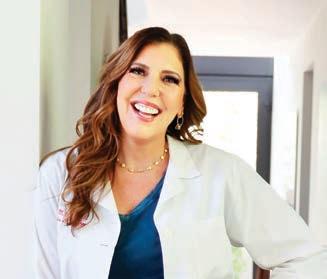










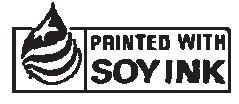
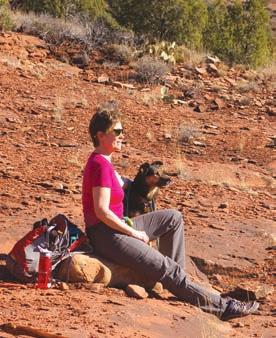
This month’s Fit Body article, on page 28, reminded me of how I used to love dancing. It was a favorite hobby of mine, and I racked up many a mile on dance floors big and small over the years!
When I was a young adult, they still had cabarets in some of the hotel ballrooms, and we would make good use of those wonderful rooms with the fancy chandeliers and spacious dance floors. Other nights, we would just dance to a great band at the neighborhood bar or in a tiny living room at someone’s house party. Of course, there were also the dance halls.
I can tell you one thing, my fun pastime sure did the trick for keeping me in shape—there wasn’t an ounce of fat on me. I remember bringing a friend to one of my favorite dance halls that featured country and western music. She had never danced to this genre before, and she likened it to a strenuous cardio workout. According to the article, 600 calories can be burned in one hour of dancing, so with an average of four to five solid hours of moving and grooving in an evening, it’s no wonder I was a lean machine!
Socializing was also a big part of the dancing scene, and something my friends and I could partake in together. We did this on a regular basis and certainly on big celebratory occasions, like New Year’s Eve, which was a particular favorite of ours. I don’t recall us ever ringing in the new year without dance being a part of the festivities. We would also make a point of mixing things up—one year, rock; another year, country; another, reggae; and so on. We loved to “cut a rug” to all types of music.
One of the great things about dancing was that I was getting plenty of exercise, but it never felt forced; in fact, it never seemed like exercise at all. It was something I loved doing, and it was effortless.
As the years rolled on, the nightlife that once seemed so vital, no longer held the same interest, which in turn, pretty much ended my dance life. However, as the article points out, there are venues such as gyms that offer fun dance classes. So, I think it’s time to give some thought to resurrecting my old dance hobby.


Did you know half of all women over 50 will experience a bone break due to osteoporosis? The one-year mortality rate is alarmingly high, comparable to breast cancer. And the side effects of leading bone drugs can be severe, including cancer risks. Yet, OsteoStrong offers a proven, innovative approach to
bone health in Phoenix (Arcadia) and Scottsdale (McCormick Ranch).
Jayson Brightwell, co-owner and a health and biohacking enthusiast, launched OsteoStrong in Phoenix and Scottsdale. His mission? To revolutionize wellness, focusing on our skeletal system. Imagine improving bone density,

easing back pain, and boosting balance, all in just 15 minutes weekly.
What sets OsteoStrong apart isn’t just its cutting-edge, drug-free methods; it’s the community warmth, bone health education, and the tangible benefits members experience: improved posture, more energy, less discomfort, and a sense of belonging.
OsteoStrong also offers therapies like red light and compression therapy, taking a holistic approach to wellness. This includes discussions on nutritional balance, stress management, and quality sleep.
May is National Osteoporosis Awareness and Prevention Month, and we’re celebrating with two events. The Echolight Bone Imaging event from May 3 to 9, in both locations, provides an accurate assessment of bone health and five-year fracture risk, all without X-rays. Plus, don’t miss our Open House on May 19 at the Arcadia center. It’s a chance to meet the team, learn about our approach, and hear success stories firsthand.

OsteoStrong is about empowering you to live fully, supported by a community that cares. Ready to start? We’re here to guide you. For more information, text or call 602-9322792. Locations: OsteoStrong Arcadia: 3301 E. Indian School Rd., Phoenix (480-428-1011) and OsteoStrong McCormick Ranch: 8120 N. Hayden Rd., Scottsdale (480-378-6448). Also visit OsteoStrongScottsdale.com. See ad, page 23.
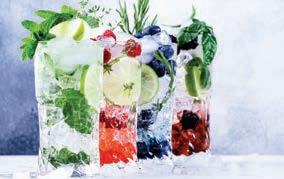


A 2023 Gallup Poll found that 62 percent of adults aged 18 to 35 say they drink alcoholic beverages, down from 72 percent two decades ago. The poll noted that young adults also drink less frequently and are less likely to drink to excess. As a result, bars like Happy Accidents, in Albuquerque, New Mexico, are increasing non-alcoholic options to cater to young consumers. The bar offers five mocktails that use ingredients such as matcha, garam masala and capsaicin oils to create complex and flavorful alcohol-free alternatives.
Mingle Mocktails was created by a recovering alcoholic looking for a way to feel included during social outings while choosing not to drink alcohol. Mingle offers flavors such as Key Lime Margarita and Cucumber Melon Mojito that are available in readyto-drink cans, as well as in bottles for more premium mixing. NielsenIQ reports consistent double-digit growth in the nonalcoholic beer, wine and spirits market. The movement toward non-boozy alternatives is praised by experts for its positive impact on health and well-being, including improved sleep, energy, mental clarity, immunity and mood.
In a study published in Annals of the Rheumatic Diseases, scientists investigated the effects of green spaces on osteoporosis and bone mineral density by analyzing data held in the UK Biobank of almost 400,000 people with an average age of 56, just over half of whom were women. In addition to the participants’ bone mineral density, the researchers calculated annual average exposures to air pollutants, such as nitrogen oxide and particulate matter, based on residential postal codes. Those living closer to green spaces, natural environments and domestic gardens had greater bone mineral density and a five percent lower risk of developing osteoporosis. In addition to air pollution, the scientists noted that psychological stress and physical activity levels appeared to influence the impact of green spaces on osteoporosis risk.
According to the Centers for Disease Control and Prevention, the prevalence of low bone mass, a precursor of osteoporosis in adults 50 and older, is 51.5 percent in women and 33.5 percent in men. Osteoporosis weakens bones; increases the risk of fractures, chronic pain, reduced mobility and disability; and reduces quality of life. It affects nearly 20 percent of women and 4.4 percent of men. Finding
Seasonal allergies are not just a concern for children and can develop or worsen as we age.
According to Dr. Gailen Marshall, president of the American College of Allergy, Asthma and Immunology, the prevalence of seasonal allergies among adults has increased, with about a quarter of U.S. adults reporting allergies compared to 19 percent of children.

Allergies occur when the immune system mistakenly identifies harmless substances such as pollen or grass as threats, leading to symptoms like sneezing, runny nose and itchy eyes. Moving to a different region with different pollen seasons can also trigger adult-onset allergies. Societal and environmental shifts such as climate change, globalization and air pollution have contributed to the increased prevalence of allergies among individuals of all ages.
While it is possible for children to outgrow their allergies, it is more challenging for adults to do so. Lifestyle changes, such as spending more time indoors or moving to another region, may help some individuals see improvement in their symptoms. Immunotherapy, which involves gradually exposing the person to small amounts of their allergen, is known to be an effective treatment for allergies regardless of when symptoms start.
Fibromyalgia is a chronic disorder that causes pain and tenderness throughout the body, fatigue and sleeping difficulties. Scientists do not fully understand what causes it. In a randomized, controlled study published in Arthritis & Rheumatology involving 114 women, researchers found that cognitive behavioral therapy (CBT) was superior to educational materials alone in reducing catastrophic negative thinking associated with fibromyalgia.
CBT is a form of psychological treatment that usually involves efforts to change thinking and behavioral patterns. Strategies include facing fears instead of avoiding them, using role play to prepare for potentially problematic interactions and learning to calm the mind and relax the body.
To measure the participants’ responses to CBT, researchers used various assessment tools alongside functional magnetic resonance imaging (fMRI), which measures the small changes in blood flow that occur with brain activity. The participants that received eight weeks of CBT experienced a reduction on the Pain Catastrophizing Scale, compared to a smaller drop in the group that received only educational materials. Furthermore, fMRI scans indicated changes in brain patterns following CBT, suggesting its effectiveness in addressing catastrophic thoughts. By providing evidence of tangible brain changes, this research can help validate the reality of chronic pain, which is often dismissed as being “all in your head.”


A recent study published in the journal Science reveals the discovery of a large hydrogen gas deposit deep within the Bulqizë chromite mine, in Albania. The findings have sparked optimism among researchers that there may be substantial underground reservoirs of hydrogen capable of meeting global power demands for a low-carbon solution. Hydrogen can be burned without releasing greenhouse gases.
While hydrogen is the most abundant element in the universe, access to it on Earth has been limited, as it tends to escape into the atmosphere. The existence of natural hydrogen seepages has been known for thousands of years, but it was believed that only small amounts of hydrogen could be found underground. This perception has been challenged in recent years, when significant hydrogen gas reservoirs were discovered in Mali, Europe and South America.
The research team believes that the Bulqizë mine holds 5,000 to 50,000 tons of hydrogen—well short of the millions of tons sought by energy-focused prospectors. Nevertheless, this discovery is confirmation that hydrogen gas can be trapped effectively underground. The technological means to efficiently extract and utilize these reservoirs are still in development.
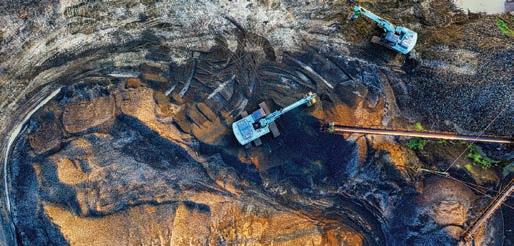
Mexico is taking a stand to protect its ancient corn varieties from the potential contamination caused by genetically modified (GM) seeds by phasing out GM corn by 2024. The move has sparked tension with the United States. Nearly 30 percent of all U.S. corn exports went to Mexico between 2018 and 2020. U.S. officials are arguing that the ban violates the countries’ trade agreement and are demanding scientific evidence to support Mexico’s claim. There is concern among American policymakers that the ban on GM corn could lead to further restrictions in the future.
Mexican farmers and officials assert that GM corn poses risks to human health and threatens their country's agricultural traditions and
The New England Aquarium reported an aerial sighting of a gray whale 30 miles off the coast of Nantucket Island. Gray whales, which lack dorsal fins, have not been seen in the Atlantic Ocean for more than 200 years, having been hunted out of existence. This is the fifth sighting in Atlantic and Mediterranean waters in the last 15 years. Scientists believe that the melting of Arctic ice caused by global warming may be at play.
According to the aquarium, “The Northwest Passage, which connects the Atlantic and Pacific through the Arctic Ocean in Canada, has regularly been ice-free in the summertime in recent years, partly due to rising global temperatures.” Without the sea ice that usually limits the range of gray whales, they can “potentially travel the Passage in the summer, something that wouldn’t have been possible in the previous century.”
Orla O’Brien, an associate research scientist in the aquarium’s Anderson Cabot Center for Ocean Life, said, “These sightings of gray whales in the Atlantic serve as a reminder of how quickly marine species respond to climate change, given the chance.”

cultural identity. Corn originated in Mexico nearly 10,000 years ago, and the country is home to more than 59 unique varieties. These native varietals have evolved to adapt to the local environment, with some being more drought tolerant and pest resistant. GM corn poses the risk of genetic contamination, as pollen from GM crops can cross-pollinate with native varieties, altering their genetic makeup and making them less suited to their specific conditions.
Some experts argue that banning GM corn alone will not be enough to protect native corn, pointing to the decline in small-scale farms as a greater threat. Conservation efforts, they assert, should focus on not only storing seeds in gene banks, but also supporting the vital contributions of traditional farmers.
According to a recent study published in Tectonics, scientists have completed the mapping of Zealandia, a largely submerged continent located below the Pacific Ocean roughly between New Caledonia and New Zealand. Zealandia covers an area of approximately 1.9 million square miles, nearly half the size of Australia. Only 5 percent of the continent is above water. The continent was first discovered seven years ago, but this study has provided a comprehensive map of its boundaries.
By analyzing rock samples and magnetic maps, researchers were able to gain insights into how Zealandia formed and separated from nearby landmasses. The granite samples collected from the northern portion of Zealandia contained zircon crystals, which hold valuable information about the continent’s geology. Through radiometric dating, scientists determined that these crystals formed around 100 million years ago, coinciding with the breakup of the supercontinent that once contained Zealandia.
Magnetic mapping was also used to provide a broader understanding of Zealandia’s shape and structure. The researchers found that highly magnetic rocks were aligned with fracture zones in the oceanic crust, indicating the stretching of the supercontinent’s crust prior to the breakup. This analysis helped confirm Zealandia’s geological connection to Antarctica and Australia.


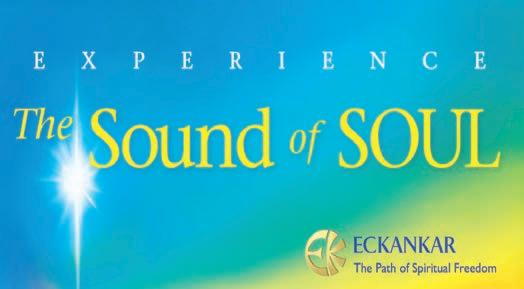


Like a well-built home, the human body’s quality of life depends upon a sturdy foundation. A complex, hormonal matrix determines our vitality and impacts major areas of health, including growth and development, stamina, sleep cycles, bone health, blood sugar levels, fertility, weight and mood. Fifty hormones take turns keeping us alive, as well as impacting lesser concerns such as hair and skin quality.
Excessive stress, certain pharmaceutical medications, hormonal contraception, auto-
immune diseases and, in rare instances, tumors can throw the body into metabolic chaos. Supporting these fundamental allies through lifestyle changes that include a nutrient-packed diet, improved gut health, supplementation and medication, when needed, can help us get back on track. Most importantly, prevention is possible with the same approach.
“Hormones are the behind-the-scenes influencers, ensuring your body operates smoothly and adjusting to the ever-changing
demands of your environment and internal states. When this delicate balance is thrown off, the consequences can be widespread, affecting virtually every aspect of your health,” affirms North Carolina-based hormone specialist Deborah Matthew, M.D., author of This Is Not Normal: A Busy Woman's Guide to Symptoms of Hormone Imbalance.
Even a slight imbalance of certain hormones—whether a deficiency or an excess—can compromise digestion, raise lowdensity lipoprotein (“bad” cholesterol),

downgrade sex drive, foster cognitive issues, amp up anxiety and even affect heart rhythm. Lifestyle factors like smoking, poor diet and lack of exercise also play a role in disturbing equilibrium. Matthew explains, “Hormones are chemical messengers that coordinate many functions well beyond the realm of reproductive health. They are produced by your endocrine glands and circulate through your bloodstream, delivering critical instructions to every tissue and organ.”
Like orchestra players, hormones work together, but the hormone oxytocin is the conductor. Hormones such as estrogen and testosterone, as well as the neurotransmitters dopamine and serotonin, cannot be produced or used properly without oxytocin. Good gut health also depends on it. “The most powerful hormone in our body, hands
down, is oxytocin. It also happens to be an alkalinizing hormone and helps oppose the negative, chronic effects of cortisol, our stress hormone,” says Anna Cabeca, a triple-boardcertified OB-GYN and author of The Hormone Fix, Keto-Green 16 and MenuPause. “Oxytocin is what we refer to as the love and bonding hormone. It’s also a longevity hormone—muscle-regenerating, mood-elevating, pain-relieving and immune-boosting. It is vital to have a high level of it if we want to boost and support the other hormones.”
Cabeca recommends boosting oxytocin naturally. “It can be as simple as thinking of something that puts a smile on your face, brings you joy and happiness, makes you laugh or gives you that warm fuzzy feeling inside,” she explains, adding that cultivating a sense of gratitude “will help boost your oxytocin level and reduce your stress hormone cortisol, which, when too high, leads to inflammation and acidity.” Her other goto oxytocin allies are funny movies, being in
nature, hugs, intimacy, therapeutic massage and activities with others like yoga classes, hiking or team sports.
The symbiotic relationship between the thyroid and our stress-fighting adrenal glands is also fundamental in systemic harmony. A 2015 study published in European Thyroid Journal revealed that 5 percent of patients with autoimmune thyroid disease also had an underlying primary adrenal insufficiency. An older study published in The Journal of Clinical Endocrinology & Metabolism in 2009 showed that 41 percent of patients with compromised adrenal function also suffered from hypothyroidism.
“In today’s high-stress environment, our cortisol production can become dysregulated. This is often called ‘adrenal fatigue’, although that term is not recognized by the conventional medicine world,” says Matthew. “This cortisol dysregulation often results in profound tiredness, cravings for salt or sugar,

reliance on caffeine for energy and difficulty handling stress.” She notes that despite its widespread occurrence, adrenal compromise slips between the cracks of conventional diagnosis. Recognizing the interconnectedness of bodily systems is vital.
“A holistic approach to thyroid and adrenal health considers the entire spectrum of an individual’s health, lifestyle and emotional well-being,” Matthew says. “Holistic practitioners often employ comprehensive testing to uncover subtle imbalances, utilize natural supplements like adaptogenic herbs to support function and recommend dietary and lifestyle changes that address underlying causes of thyroid and adrenal symptoms.”
For many, planning a family is one of life’s high points, but according to the U.S. Centers for Disease Control and Prevention, 13 percent of married women under the age of 30 struggle to conceive; about 22 percent of married women between ages 30 and 39 are hit the hardest. The frustration can be agonizing. “I often say that infertility is not a diagnosis; it’s a symptom,” attests Aumatma Simmons, a doubleboard-certified naturopathic doctor, endocrinologist and fertility specialist at the Holistic Fertility Institute, in Berkeley, California. “When we consider infertility as a symptom, we start understanding that it is the check-engine light that our body is giving off, trying to tell us something is out of whack. Maybe it’s the hormones or something somewhere else in the body. The root causes must be discovered and addressed.”
Common contributors to infertility include amenorrhea (absent periods) caused by physical or emotional stress, weight extremes (obesity or underweight) and age. Simmons underscores the role of diet and lifestyle in both women and men. “It is well-researched that lifestyle habits like smoking, alcohol and marijuana can contribute to fertility and pregnancy outcomes. Additionally, there is ongoing research about the role of sedentary lifestyles and body mass index as potential indicators of pregnancy outcomes. Even blood sugar
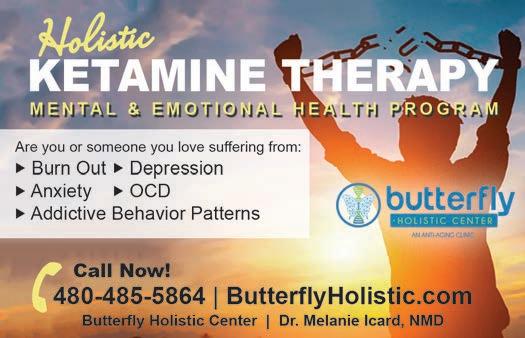
and inflammation in the male partner can impact fertility, as well as a woman’s ability to carry a pregnancy to term.”
Simmons directly attributes food habits to egg and sperm quality, asserting, “Diet is vital in the role of implantation. There are studies that have shown that gut inflammation contributes to uterine inflammation, which directly affects implantation and pregnancy outcomes.” She also connects the dots between the mental and emotional health of both parents and baby success. Negative talk, poor self-esteem, responsibility overload and an inability to let go or ask for help can also foster infertility.
Taking a few steps toward a more balanced body can go a long way. Cabeca emphasizes, “Deep, restorative sleep is essential to regenerate and rebalance. Physical activity is absolutely necessary for hormone circulation throughout the blood and lymphatic system, so doing things that make you huff and puff and sweat daily is critical.” She also recommends alkalizing the diet by amping up hydration and fortifying meals with low-carbohydrate food sources, low-glycemic fruits like berries, leafy greens, cruciferous vegetables and sprouts. Adding intermittent fasting to the mix also packs a positive punch, especially as progesterone and estrogen levels decrease with age and we have a higher risk for developing insulin resistance.
Everyday foods for hormonal happiness include healthy, high-fat foods like avocados, raw butter, ghee, egg yolks (rich in choline and iodine for healthy thyroid function), soaked nuts and seeds, flaxseed, hemp and olive oil; clean proteins like quinoa, organic pasture-raised poultry and beef, wild-caught fish, lentils and beans; and spices like turmeric, cinnamon, cumin, garlic and fresh cilantro. Avoid trans fats, sugar and refined carbs, which trigger inflammation and disrupt hormonal balance.
Matthew recommends cortisol-lowering activities like meditation, yoga and breathwork, which help balance cortisol levels, improve our resilience to daily stressors and support overall hormonal health. She also stresses the importance of seven to nine hours of restful sleep by “establishing a consistent bedtime routine, minimizing exposure to blue light from screens before bedtime and creating a sleep-conducive environment in your bedroom. Many of your hormones are produced at night while you are in a deep sleep.” More shut-eye also regulates stress hormones and helps to repair the body’s cells and tissues.
Life is better when our bodies are happy, and change begins with small, inspired steps. Cabeca reminds us, “Create a life rhythm that works for you.”
Marlaina Donato is a visionary artist, composer, author of several books and long-time journalist for Natural Awakenings. Connect at BluefireStudio.art.

We are all looking for ways to stay healthy, but in today’s world it’s become a huge challenge. Toxins are everywhere—in the air, in our water, even in the food we eat. Instead of filling the grocery shelves with more fruits and vegetables, grocery stores fill the aisles with processed foods with unhealthy ingredients.
We all have the same goal: to stay healthy. Yet it seems almost impossible when temptation is all around us, preventing us from sticking to our goals. We love to socialize with friends and family at restaurants, but once again, we are faced with too many unhealthy choices.
The other problem we have these days has to do with exercise. Too many of us sit at desks all day long. Not only does that mean we don’t get enough exercise, it also means we’re cooped up inside for most of the day. Sitting inside all day long is not only stressful, it’s a detriment to our health.
So, this is the battle we face every day—being surrounded by unhealthy food and an unhealthy environment. It’s no wonder we struggle with our health.
Even when we try making changes to our lifestyle, it’s hard to keep up with. Something always seems to be getting in the way—no time to shop for healthy food, work demands and family obligations. How are we supposed to carve out time to stay healthy when we have so many demands on our time?
As frustrating as it is, I want to encourage you not to throw in the towel. There are still things you can do if you want to stay healthy. Start by drinking at least 60 ounces of water a day; drinking this much is critical to your health. I know that sounds like a lot to some of you, so try working your way up. We need water to flush toxins from our bodies, hydrate our cells and organs, and keep our bones and joints from becoming dehydrated.
Another thing you can do is limit the amount of meat you eat each week. When you do eat meat, limit your portion size. Instead, fill your plate with more vegetables. If you can cut back on meat, you’ll need to incorporate other sources of protein into your diet. Try adding more variety to your diet with protein sources like quinoa, lentils, beans and nuts.
Adding more vegetables into your diet is crucial to your health. If you can, commit to eating vegetables with every lunch and dinner. Fruit is just as important as vegetables to your diet. And it’s a great way to curb those cravings for sugary, processed sweets.
None of these changes is easy, but if you are serious about improving your health, you’ll give it a try. When you can keep trying to do the right things, you’ll not only feel better about yourself, you’ll feel better about your health.

Jean Hanson is co-owner of Realign Your Life Wellness Center, in Mesa. She is a certified Body Code practitioner, Higher Guidance Life Coach and author of Trust Your Higher Guidance: Align Your Life to Manifest the Joy and Success You Deserve. Realign Your Life Wellness Center also features the Harmonic Egg sound and light therapy, Life Force Energy with Sound, and sound baths. Appointments can be booked online at RealignYourLifeAZ.com or by calling 480-306-7321. See ad, page 13.
Advertorial
The rise in prevalence of celiac disease and related conditions, and shifts toward paleo, keto and other gluten-free diets, have driven the gluten-free products market from $973 million in 2014 to $6.5 billion in 2022. The market for these products is expected to reach $15.1 billion by 2032 according to The Brainy Insights, a market research company. However, switching to gluten-free products is not a one-size-fits-all decision.
Celiac disease affects an estimated 1 percent or approximately 3 million Americans, although approximately 60 to 70 percent of those have not been diagnosed, according to the Celiac Disease Foundation. The illness is an autoimmune condition that results in tissue damage in the small intestine, which may be accompanied by abdominal pain, gas and bloating, cognitive impairment, constipation, diarrhea, anxiety, fatigue, anemia, skin rashes and joint pain. It is diagnosed with blood tests and confirmed by taking pictures inside of the small intestine.
The National Institutes of Health report an additional 6 percent of Americans may have a related condition known as non-celiac gluten sensitivity (NCGS). While some symptoms of intolerance or sensitivity to gluten are similar to those with celiac disease, NCGS does not come with intestinal damage. Symptoms of NCGS also may occur outside the intestines such as heartburn, feelings of fullness, vomiting, headaches, anxiety, depression, a foggy mind and fibromyalgia-like symptoms.
For those allergic to wheat or other grains containing gluten or that have gluten-related disorders, permanently eliminating gluten is a must. This includes inhaling it, eating it and encountering it through skin or hair.
Gluten is a protein found in grains such as wheat, spelt, semolina, farro, barley and rye. These grains are a source of fiber, B vitamins, trace minerals and other nutrients. Many studies have
associated whole-grain consumption with improved health outcomes. For instance, as part of a healthy diet, wheat has been found to reduce the risk of diabetes, heart disease and weight gain.
Gluten interplays with the bacteria in the gut. The journal Nutrients published a review in 2021 of various studies that evaluated the effects of a gluten-free diet on the microbiome of healthy, celiac disease and NCGS patients. The researchers found that a gluten-free diet reduced the bacterial richness and affected gut microbiota composition of patients in all three groups. In patients with celiac disease or NCGS, the gluten-free diet created a positive effect on gastrointestinal symptoms and helped restore microbiota population by reducing the population of proinflammatory species. However, in healthy patients, a gluten-free diet had a negative effect on the gut by decreasing the number of beneficial species and increasing the number of bad microorganisms.
According to the Harvard T.H. Chan School of Public Health, changes in the amount or activity of good bacteria have been associated

with gastrointestinal diseases such as inflammatory bowel disease, colorectal cancer and irritable bowel syndrome.
“Changes in your diet can alter your microbiome within one to two days,” says Dr. Tom O’Bryan, an expert on wheat-related disorders, NCGS, celiac disease and their link to autoimmune diseases. “When you go on a gluten-free diet, you remove prebiotics that feed the good bacteria in your gut. This then causes the bad bacteria to flourish and reproduce, resulting in increased inflammation in your gut, a contributor to disease.” This makes sense as 70 to 80 percent of immune cells are present in the gut.
Whether a gluten-free diet is required because of a gluten-related disorder or by choice, it is essential to add prebiotic foods to replace the beneficial impacts lost when eliminating wheat and other grains. Prebiotic and probiotic supplements are a start, but consumption of vegetables is the key.
“Probiotics are most effective when they are combined with a high-fiber diet featuring a variety of vegetables,” says O’Bryan. He recommends at least one daily serving of root vegetables, such as rutabaga, turnip, parsnip, radish, carrot and sweet potato, and two daily servings of prebiotic foods like bananas, garlic, onion, asparagus, leafy green vegetables, legumes, artichoke, apples and cocoa. “I also recommend a forkful or more of fermented foods each day. Vary it up with some sauerkraut, kimchi, miso or fermented beets, or drink some kefir or kombucha.”
“If you're experiencing digestive discomfort, give a healthy, gluten-free diet a try for at least 30 days and assess how you feel,” recommends Michelle Ross, a board-certified nutrition specialist, licensed dietician and functional medicine practitioner. “My recommendation is to stay away from the gluten-free aisle. The truth is many people that switch to a gluten-free diet often turn to processed gluten-free foods. The focus
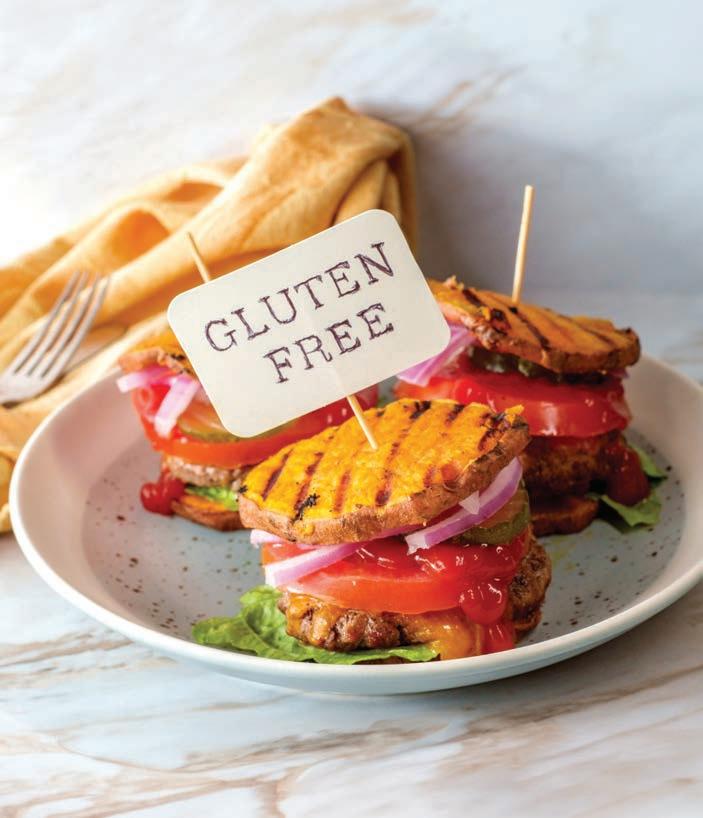
should be on consuming whole, real, unprocessed foods.”
Even for those without gluten-related conditions, too much gluten can create its own health complications. In a 2015 study published in Nutrients, gliadin, a component of gluten, was administered to biopsies taken from the small intestines of healthy, celiac disease and NCGS patients. The researchers found each group experienced increases in inflammatory markers and in markers of leaky gut, with the healthy group having the greatest increase in interleukin 10, a rapidly activated pro-inflammatory cytokine that defends the body against microbial invasion.
For otherwise healthy people, finding a balance between enough gluten to feed gut probiotics but not so much that it results in gut permeability issues is important. “If you decide to continue consuming gluten, opt for whole or minimally processed einkorn wheat, rye, barley, spelt and Kamut wheat,” says Ross. “These grains have not undergone hybridization and are not typically sprayed with glyphosate before harvesting. Additionally, consider consuming sprouted or fermented forms of these grains, as they can be more digestible.”
Deborah Bevilacqua is a journalist and contributor to Natural Awakenings Publishing Corporation.


This salad is full of cruciferous vegetables, including cauliflower, broccoli and Brussels sprouts, which have a nutrient called diindolylmethane (DIM) that helps process estrogen in a healthier way. Pumpkin seeds are a great source of zinc, which supports progesterone production, and magnesium, which can help with period cramps. Avocado and olive oil are rich in hormone- supportive omega-3s.
YIELD: 4 SERVINGS
1 head purple cauliflower
¼ head white cauliflower
¼ head broccoli or 1 cup Brussels sprouts
2 Tbsp canned red kidney beans (optional) ½ avocado, sliced
1-2 Tbsp pumpkin seeds
1 Tbsp olive oil or avocado oil
Pinch of salt
Dash of black pepper
Preheat oven to 320°F. Cut cauliflower and broccoli into florets (or slice Brussels sprouts in half) and add them to a baking tray. Drizzle the veggies with olive oil, season with salt and pepper, and place into preheated oven to roast for about 15 minutes. Stir the vegetables and roast for another five to 10 minutes until fork-tender and golden brown. Remove from oven and set aside to cool. Combine with other ingredients.
Recipe courtesy of Deborah Matthew.
YIELD: 6 SERVINGS
2 cups dried mung beans, soaked in water for 8-12 hours
1 Tbsp coconut oil, ghee or olive oil
1 onion, finely chopped
4 garlic cloves, finely chopped
1 tsp ground cumin
14 oz spinach, kale, collards or any other greens
2 tsp Celtic sea salt
1 13.5 oz can full-fat coconut milk
2 cups quinoa
7½ cups water
Optional: cilantro, avocado
Heat oil in a pressure cooker (such as an Instant Pot); add onion, garlic and cumin. Sauté until fragrant; stir occasionally. Add greens, soaked mung beans, quinoa and water. Put the lid on, and pressure cook for 12 minutes. Once pressure has fully released, open the lid and stir in coconut milk. Top it off with fresh avocado and cilantro before serving.
Recipe courtesy of Aumatma Simmons

1 large yellow onion
3 sprigs fresh, flat-leaf parsley leaves, finely minced
2 lbs finely ground lean lamb or beef
1 tsp sea salt
Preheat a grill to high, or if using an oven, preheat to 450°F.
Quarter the onion and finely mince in a food processor. Transfer the minced onions into a fine-mesh sieve set over a bowl and press down on the onions to remove any excess liquid. Discard the liquid and set the onions aside.
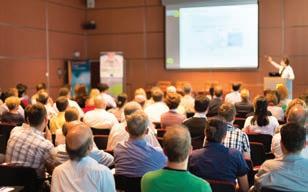
Check out the latest events at naturalaz.com/calendar
½ tsp freshly ground black pepper
½ tsp ground allspice
12-14 wooden or metal skewers, presoaked in water for 30-60 minutes
Add the parsley to the food processor and pulse to finely chop. Return the drained onions to the food processor bowl. Add the ground meat and season with the salt, pepper and allspice. Process to thoroughly blend all the ingredients, periodically pausing the processor to push the meat down and scrape it from the bottom and sides of the bowl. Transfer the meat mixture to a large mixing bowl. Hand-mix the meat mixture to make
sure that all ingredients are evenly incorporated into a smooth mixture.
Working in ⅓-cup portions, mold the meat mixture into a long, sausage-like shape, about 6 inches in length. Then, hand-roll the meat to a thickness of about 1½ inches. Using the sharp end of the skewer, pierce through one end of the kabob and slide it through the other end; the meat should be about 1 inch away from the sharp tip of the skewer. Squeeze the meat one more time to ensure that it tightly adheres to the skewer. Continue making kabobs in the same manner with the remaining meat mixture. There should be 12 to 14 skewers.
If using a grill, lightly brush it with oil. Place the kabobs on the grill over a medium flame and cook, turning them periodically so that they cook evenly, 4 to 5 minutes per side, being careful not to over-grill them.
If roasting in the oven, place the kabobs on a lightly oiled baking sheet, spacing them evenly apart, and roast on the middle rack of the oven for 12 to 15 minutes, turning them over halfway through the roasting time. Serve hot.
Recipe

Oral health is not just about maintaining a sparkling smile; it’s intricately linked to overall well-being, especially in women. From hormonal fluctuations during pregnancy to systemic conditions like periodontal disease, the health of the mouth can significantly influence various aspects of a woman’s health.
During pregnancy, hormonal changes can lead to a host of oral health issues. Elevated progesterone levels, for instance, can exacerbate gingivitis, leading to swollen, tender gums prone to bleeding. This condition, commonly known as pregnancy gingivitis, affects a significant portion of pregnant
women and underscores the importance of regular dental checkups during this crucial period. Left untreated, gingivitis can progress to periodontitis, which has been linked to adverse pregnancy outcomes such as preterm birth and low birth weight.
Fortunately, the use of mercury-containing dental amalgams has significantly declined over the past few years. Research suggests that exposure to mercury vapor from amalgam fillings, especially during placement and removal, may pose risks to fetal development (mercury from amalgams even shows up in breast milk). Since removing mercury fillings is not recommended during pregnancy, we sug-

gest having your amalgams safely removed as soon as possible if you are thinking of becoming pregnant.
Fluoride, a common ingredient in toothpaste and drinking water, should also be avoided. Ingesting of fluoride has not been shown to prevent tooth decay, and high levels of fluoride have been associated with adverse neuro-developmental effects in babies. A good biological dentist can offer numerous other strategies to ensure a decay-free mouth.
Beyond pregnancy, periodontal disease presents a significant concern for women’s overall health. Research has shown a link between periodontal disease and various systemic conditions, including cardiovascular disease and diabetes. The chronic inflammation associated with periodontitis may exacerbate existing health conditions or increase the risk of developing them.
Finally, one of the most overlooked problems contributing to a woman’s health is a condition known as upper airway resistance syndrome. Even a slight increased resistance to airflow (think of it as a very mild form of sleep apnea) puts the body into a “fight-orflight” state. This results in increased cortisol and prevents the body (and brain) from getting proper restorative sleep. We now know that clenching and grinding are mechanisms the body uses to try to keep the airway open. It is unfortunate more doctors are not aware of this connection, since we now understand the adverse impact airway issues can have on health.
Oral health is a critical component of women’s overall well-being, with far-reaching implications for maternal and fetal health during pregnancy and beyond. Hormonal changes, dental materials, fluoride exposure, periodontal disease and sleep-related disorders underscore the complex interplay between oral health and systemic health outcomes in women. By prioritizing preventive dental care and addressing oral health issues promptly, women can optimize their overall health and quality of life at every stage of life.

Dr. Kristen Graham graduated from the University of Maryland School of Dentistry in 2013. She is a member of the International Academy of Oral Medicine and Toxicology (SMART certified in safe mercury removal) and achieved her naturopathic dentist certification with the American College of Integrative Medicine and Dentistry in 2017. Graham is very passionate about holistic approaches and getting to the root of the symptoms. She has a heart for helping children and adults. She is also currently on the board of Children’s Health Defense AZ chapter. In her free time, she loves to be in nature, in fellowship or spending time with her family. To schedule an appointment with Graham, call Natural Dental Partners at 602-775-5120. Location: 6930 E. Chauncey Ln., Ste. 100, Phoenix. For more information on services offered, visit MyNaturalDentist.com and ABreathOfHealth.com. See ad, pages 5 and 15.





The ecological impact of disposable feminine hygiene products is substantial. Nearly 20 billion sanitary napkins, tampons and applicators are thrown into U.S. landfills every year, generating more than 200,000 tons of waste. Most of these products are made of (and wrapped in) non-biodegradable plastic and contain dangerous pesticide residues, bleach and phthalates. From an economic standpoint, the average woman spends about $12,800 on menstrual care in her lifetime.
To reduce the plastic waste that languishes in landfills and waterways, environmentally conscious women are increasingly turning to more sustainable options, including reusable, biodegradable and organic products that are healthier for both people and the planet without compromising on functionality. Although reusable products are more expensive, they are worn over and over again for years, making them more costeffective in the long run.
Menstrual Cup: Made with medical-grade silicone, this alternative to disposable tampons is worn inside the vagina to collect flow, rather than absorb it. It is safe and easy to use. A cup holds four to six times more than a single tampon or pad, and it can be worn for up to 12 hours before rinsing and reinserting. Most people have to empty it only in the morning and evening.
Menstrual cups can be worn while swimming, running or dancing. To sterilize between periods, a one-to-two-minute boil and thorough drying keeps the cup ready
for next time. With proper care, a cup can last years.
Period Underwear: Absorbent, machinewashable and hygienic, period underwear uses a layered approach to leak-proofing with a moisture-wicking top layer, absorbent core layer and waterproof liner. Simply rinse after use and drop it in the next load of laundry.
Reusable Pads: Thin and flexible, reusable pads can absorb more than a disposable counterpart and typically last three to five years. Some companies make their reusable pads from organic cotton and spandex, with edge-to-edge protection and snap closures to keep them in place. Simply rinse them in cold water and throw them in the washing machine. For lighter days, reusable pantyliners are also available.
Organic Tampons and Pads: Although disposable, tampons and pads made from organic cotton are healthier for both people and planet because they are free of
BPA-plastic, dyes, pesticides, dioxins, fragrance, chlorine or other synthetic materials. Look for companies that provide plastic-free applicators and compostable wrappers and packaging.
• Cora.life
• Natracare.com
• PublicGoods.com
• PeriodAisle.com
• TheJuneCup.com
• ShopDiva.com
• Saalt.com
• Period.co
• ShopProof.com
• ItsAugust.co
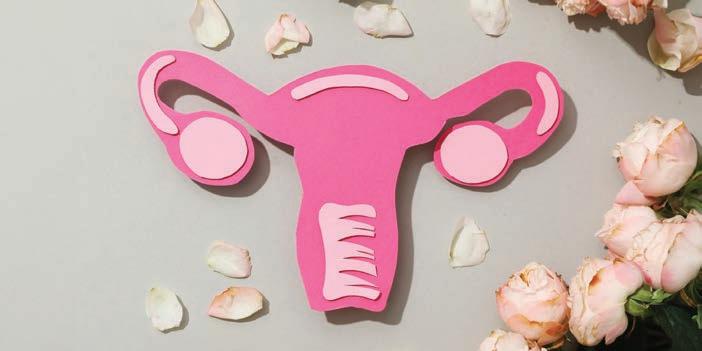
Most of us can remember the first time we felt soft, cool grass under our bare feet or noticed sweet ozone in the air after a wild thunderstorm. The sometimes-incompressible wonders of Gaia sustain our existence, boggle our minds and inspire us to contemplate our place in the great universal order. Our love affair with this beautiful planet begins early, but it is easy to forget this sacred partnership in the mundane whirlwind of adult life. Like any other vital relationship in our lives, it is all too easy to take it for granted and allow ourselves to put forth minimal effort.
Whether we till the soil in our backyards, pick up trash along a hiking trail, choose eco-friendly cleaning products or simply pause to witness a glorious sunset, we are all custodians of the Earth. Fighting the good fight to decrease our toxic impact, preserve our woodlands and clean up our oceans can seem overwhelming, and like most dedicated caregivers, sometimes we feel weary.
We can gain a second wind by setting aside the alarming to-do lists and focusing on what is being accomplished daily. When we choose to weave simple tasks into the tapestry of ordinary days, our children learn by example, and the chain remains unbroken. Most importantly, fulfilling our part in the whole need not be boring, too serious or time-consuming—it can be downright joyful.
• Plant a pollinator-friendly backyard or patio flower garden.
• Buy local produce and farm products whenever possible.
• Post short, informative social media posts about our allies: the bees, bats and opossums.


• Use less plastic.
• Go paperless when paying bills.
• Nix lawn chemicals, leave a portion of grass to go to seed and opt for green lawn care.
• Plan a local family vacation and support the neighboring economy.
• Learn creative ways to reuse, recycle and upcycle.
• Get more exercise and save on gasoline by walking to local businesses when possible.
Marlaina Donato is an author, visionary painter and composer. Connect at BluefireStudio.art.


English author Virginia Woolf once said, “For most of history, Anonymous was a woman,” illustrating the predicament of accomplished females that never received the recognition they were due. One example was Eunice Newton Foote, who presented her findings on the greenhouse effect at the 10th annual meeting for the American Association for the Advancement of Science in 1856, only to be eclipsed by John Tyndall, who was credited for this discovery even though his work on the subject was carried out two years later.
In 2013, the United Nations General Assembly adopted a resolution pronouncing that “full and equal access to and participation in science, technology and innovation for women and girls of all ages is imperative for achieving gender equality and the empowerment of women and girls.” In recent years, impactful women like African American space scientist and mathematician Katherine Johnson and Hispanic astronaut Ellen Ochoa have begun to be acknowledged for their contributions to science, technology, engineering and mathematics (STEM). Still, many more women remain on the sidelines.
Only 30 percent of the world’s researchers and less than one-third of the STEM workforce are women. Paradoxically, women are more impacted by climate change than men, given that 70 percent of individuals living in poverty are women. Females have less access to resources and education and are often dependent on natural resources that are impacted by global warming for their livelihood.
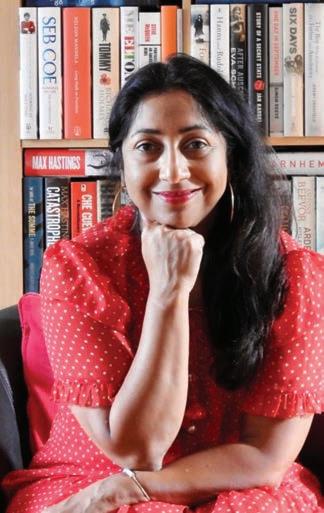
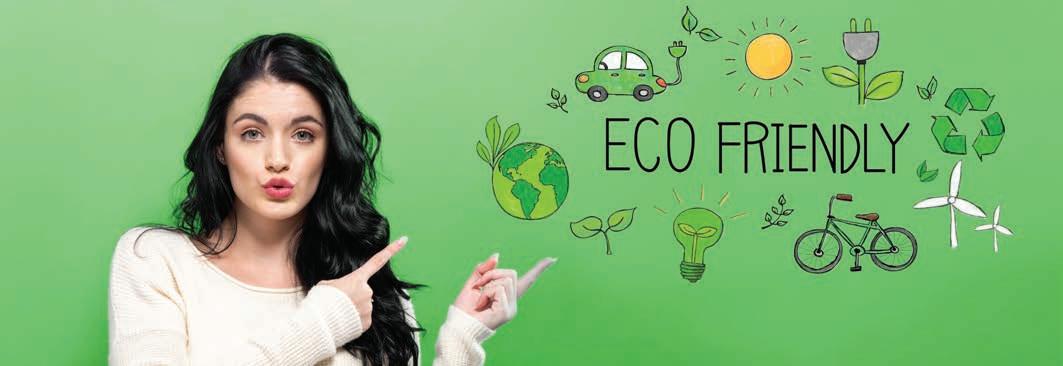
“Climate change affects everyone. It does not discriminate, yet, sadly, women’s voices are not heard enough, and women are even invisible at times,” says Sangeeta Waldron, author of Corporate Social Responsibility Is Not Public Relations. “Women, particularly in vulnerable regions, are the first to be impacted by climate change, as they are the ones who will need to collect the water from distant wells or rainfall when there is a drought; or who work on farms when the male members of their families have gone to the cities to earn a living, when their crops run dry due to lack of rain or in some places have too much rain; or who fight against the big fossil fuel companies that encroach on their land, organizing their community to fight back.”
Waldron also laments, “Neither do we see enough female representation at the negotiating table when discussing climate policies. The latest data and images from COP28 [28th Conference of the Parties to the United Nations Framework Convention on Climate Change] reinforce this; 140 world leaders were scheduled to speak, and only 15 were women. It highlights the gender gap despite improvements from previous COPs.”
“Many women are playing a tremendous role in the green economy and are creating a sustainable, just and resilient economy,” says Quinn Antus, the program manager of emerging markets, carbon management and carbon dioxide removal for the state of Colorado. Here are some examples of female champions.
Yohana Tesfamariam Tekeste developed a new type of insurance to help farmers in eastern and southern Africa reduce their vulnerability to climate change. Haein Shin supports international education development, curating content about the environment, digital and financial literacy, and employment readiness. Nzambi Matee, a
Young Champion of the Earth recipient, created bricks made of discarded plastic waste, finding a solution for littering and the housing crisis in Kenya. Naomi Davis founded Blacks in Green, which strives to be a national network for environmental justice and economic development that closes America’s racial health/wealth gap.
Zoë Gamble Hanes is the president of CleanChoice Energy, which helps make renewable energy accessible for all through solar farms and other clean-energy solutions. She says, “Sustainable practices only benefit from bringing in diverse voices. We’ve found ourselves in the midst of a new-age industrial revolution that requires a diverse talent pool to reach success. By empowering more women to join sustainable efforts—especially within the renewable energy sector that has traditionally been a male-dominated industry—we can
usher in a new generation of passionate leaders with different, and important, perspectives, all working toward the goal of creating a greener, more sustainable future for years to come.”
Including women in sustainability is not just about equality, it is about leveraging human talent, insights and creativity to address climate change, food insecurity, equity and other pressing issues of our time. The facts are that the global temperature is rising, the ocean is getting warmer, extreme-weather-related events are increasing in frequency and glaciers are melting. Our best hope for addressing these issues is if everyone participates.
Kelcie Ottoes is a copywriter and content creator specializing in sustainability and environmental topics.

Getting fit offers many health benefits, including stress management and better cardiovascular health, but stepping into a dance class can also increase levels of feel-good neurotransmitters that reduce pain and boost mood. From fusion dance to ballroom and hip hop, today’s studios provide plenty of diversity in their class offerings; a welcoming, non-judgmental approach; and encouragement for all ages to try something new.
“These days, there are many entries into dance that are non-performance-based— dancing just for the joy of it, to feel the endorphin rush that happens when moving your body to music,” says Jessica Gleason, founder and lead instructor of Seattle Dance Fitness, in Shoreline, Washington. Aside from the perks of better balance and a stronger, more supple body, dancing can help us build solid social bonds, too. “Step into a dance fitness class at a gym, studio or community center, and you will definitely meet new people, foster relationships and feel like you’re a part of a bigger community, all things that are positive for your mental health and well-being,” Gleason adds.
Kelly Peckholdt, owner and director of Positions Dance Studio in Babylon, New York, champions the “emotional regulation due to the release of serotonin when you are dancing. I personally always feel so much better after a dance class.” She reminds us that we do not need to be born with a talent to boogie. “A lot of people believe that they must be flexible or have good balance in order to try a dance class, but we dance so that we can gain those benefits. Moving your body is for anyone at any age and any shape or size.”
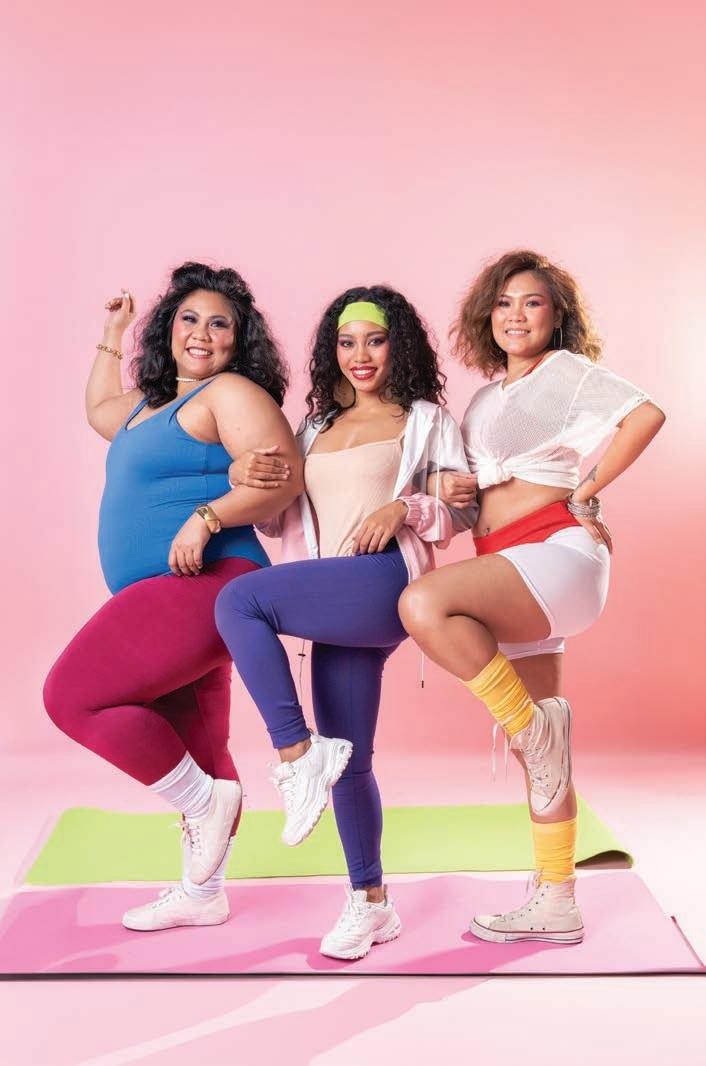

Taking up joyful swing or invigorating salsa can not only support muscle and joint health, but also get us to a healthier weight. A 2015 study led by Dr. Nick Smeeton, a UK lecturer at the University of Brighton Department of Sport and Exercise Science, revealed that many dance styles, including ballroom, ballet and contemporary, can burn more calories than running, cycling or swimming. The research team, which measured key biomarkers in adult dancers, found that up to 600 calories could be burned in one hour.
A 2017 meta-analysis of 18 studies involving ballroom, contemporary, jazz and cultural dance forms, published in Alternative Therapies in Health and Medicine, found significant improvement in stamina, muscular strength and balance in older adults, as well as improved psychological well-being. According to the Bone Health & Osteoporosis Foundation, dance can be a boon to the skeletal system. The brain is also positively impacted by doing a little cha-cha or line dancing. Research published in 2017 in Frontiers in Aging Neuroscience reports improved cerebral white matter—the part of the brain that governs thought processing and speed—through folk dancing.
“There is so much more to dance than classical ballet,” Peckholdt says. “I think that ballet,
tap and jazz are very manageable for older adults, in perhaps a beginner-level class.”
Gleason recommends four branded modalities that are popular these days: Zumba, a cardio workout with Latin-inspired dance moves; Jazzercise, a high-intensity workout that blends dance with Pilates, yoga, kickboxing and strength training; REFIT, a dance class that incorporates emotionally uplifting and community-building components to keep students motivated; and WERQ, a cardio-dance workout that incorporates trending pop and hip-hop music.
To find a class, Gleason suggests Googling “dance workout near me”. She also advises a healthy amount of patience when trying something new. “We always remind newcomers that it takes some time to learn the moves and that they aren’t supposed to look and move like the instructor. They are supposed to move and look like themselves.”
For some, taking the plunge and walking into a studio is the hardest part. Gleason inspires us when she says, “So many people tell me it took them forever to try a class because they were nervous about trying, but once they did, they wished they’d done so sooner.”
Kelly Mercedes is a narrative journalist and contributor to KnoWEwell and Natural Awakenings.


Book event at CHANGING HANDS BOOKSTORE in Tempe May 30 at 7pm




From the New York Times bestselling author


Foreword by His Holiness the Dalai Lama




PRACTICAL SKILLS to Heal Your Sensitive Self, Your Relationships & the World


Lyme disease, a complex and often misdiagnosed illness, affects approximately 476,000 people annually in the United States. Found in all 50 states and every continent but Antarctica, it is transmitted primarily by the Ixodes tick, more commonly known as the deer tick or black-legged tick. If not promptly addressed, the ailment can lead to long-term health complications. Thanks to advancements in medicine, the identification and treatment of Lyme disease continues to evolve and improve.
The story of Lyme disease began in the 1970s with a community outbreak of facial palsy and arthritis in Lyme, Connecticut. An explanation for this mysterious illness did not surface until the early 1980s, when Willy Burgdorfer, an investigator for the National Institutes of Health, discovered a bacterium in ticks from the area (Borrelia Burgdorferi), laying the foundation for modern testing and diagnostic methods.
There are several complicating factors that make a Lyme disease diagnosis difficult. The characteristic bullseye-shaped rash is present in less than half of cases and may disappear quickly. Early signs and symptoms such as fever, chills, muscle pain, headache, joint pain, fatigue and swollen lymph nodes are easily mistaken for other illnesses.
The utility of early lab testing is limited because the process takes several weeks and can lead to false negatives. This leaves physicians to rely on observable symptoms and rule out other possible causes. A doctor will also ask if a patient has been out in the woods or grassy areas where they might have been exposed to black-legged ticks.
Tom Moorcroft, DO, the founder of Origins of Health and an investigator of medical mysteries, refers to Lyme disease as “the new great imitator and instigator,” describing its ability to mimic various other diseases, often at the same time. For people experiencing persistent symptoms, comprehensive lab testing may be needed to distinguish between Lyme and other tick-borne and nontick-borne diseases.
According to the U.S. Centers for Disease Control and Prevention (CDC), untreated Lyme disease can produce a wide range of symptoms, including fever, rash, facial paralysis and arthritis. While conventional antibiotics remain a cornerstone for earlystage treatment, emerging research increasingly recognizes and supports the role of natural and botanical medicine.
In a 2020 study published in Frontiers in Medicine, seven botanical agents were identified as promising treatments for Lyme disease, including black walnut, Japanese
knotweed, sweet wormwood, cat’s claw and Chinese skullcap. Cryptolepis sanguinolenta extract caused a complete eradication of the B. Burgdorferi bacterium in their study. The scientists recommended additional research to determine dosages and extract combinations that might offer hope for those suffering long-term symptoms.
The integrative and functional medicine approach to treating Lyme disease is multifaceted and customized, taking into account an individual’s health history, environmental factors and unique physiological responses. The overarching goals are to target the infection, bolster the immune system, manage symptoms and promote overall well-being. According to Dr. Darin Ingels, a licensed doctor of naturopathic medicine and author of The Lyme Solution, “All other therapies, no matter what they are, probably aren’t going to be as effective until you’ve really taken care of your gut health and your mental and emotional being.”
Lifestyle interventions are critical in this holistic treatment. A diet rich in whole foods, clean proteins and minimal grains, dairy, sugar and processed foods can mitigate inflammation and aid recovery. Complementary practices such as regular exercise, sauna sessions, Epsom salt baths, sufficient sleep and stress management techniques play vital roles in healing and preventing long-term complications.

Prevention is integral in combating Lyme disease. Tick repellents and protective clothing can significantly reduce bites. After spending time in wooded or grassy areas, thoroughly check the skin for early tick detection and removal. Upon discovering a tick, remove it promptly and monitor the bite area for signs of a rash or infection. If symptoms appear, quickly seek guidance from a healthcare professional with expertise in Lyme disease.
A healthy diet, regular exercise and sufficient sleep are essential for maintaining a robust immune system and can bolster the body’s defenses, potentially reducing the risk of developing chronic Lyme disease.
• International Lyme and Associated Disease Society (ilads.org) is a global nonprofit that promotes research, education and policy associated with Lyme and associated diseases.
• LymeDisease.org offers support and information curated by patients.
• TickSpotters from the University of Rhode Island (Tinyurl.com/tickspot) provides tick identification information and science-based risk assessments.
• Local health departments can provide updated information and recommendations for specific areas.
Lyme disease presents a significant global health challenge, necessitating a multifaceted and individualized approach to its management. Integrative and functional medicine offer an effective strategy, combining conventional medical treatments with lifestyle and natural therapies. This holistic approach empowers individuals to take an active role in their health journey, ensuring not just the treatment of Lyme disease, but also the promotion of long-term wellness and quality of life.
Jill Valerius is a dual-board-certified physician in family and integrative medicine with an additional certification in functional medicine. Learn more at NowHealthPalmer.com.

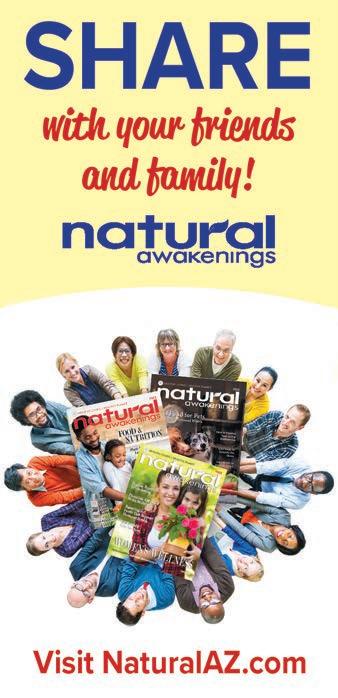
Life’s most wondrous gifts are the babies that come into the world every day, but the clinical birth environment is not always an ideal choice for everyone. Modern midwifery, a safe alternative, honors its ancient roots by aiming to provide a comfortable and beautiful passage for both mommas and little ones. In countries like France, Sweden and Japan, midwives are involved in almost 75 percent of deliveries at birth centers, homes and hospitals. The practice is less popular in the U.S., with only 12 percent involving midwives in 2020.
“The birth experience became very medicalized at the turn of the last century out of necessity. However, midwives have been
delivering babies for centuries in all types of settings. Birth is a natural process that does not necessarily need to take place within the confines of the hospital setting,” says Paul Quinn, a certified nurse-midwife in Ridgewood, New Jersey, and author of several books, including Prenatal Possibilities: Recipes for a Healthy Pregnancy…and Beyond.
Prenatal and perinatal psychologist Susan Highsmith, in Tucson, Arizona, notes, “Care in birth centers and at home can be far more personal. For women who experience low-risk pregnancies, a natural, home birth or birth-center birth can be a satisfying and safe alternative to a hospital birth. There are a host of benefits for the baby
that are not possible in hospital settings where protocols take precedence.”
One of the advantages of a natural birth is the mother-child bonding encouraged in a non-clinical setting. “Babies should not be placed in nurseries, but should be immediately placed on the mother’s body and allowed to seek and find the breast,” Highsmith explains. “Being taken away from the mother, as is frequently done in hospitals, is anathema.”
Aside from facilitating the birth process, midwives can provide medical care, prescribe medications and order blood tests and imaging. Many are nurses and wellversed in any situation that might arise before, during and after labor.
Doulas focus on nonclinical care by providing physical and emotional comfort, keeping expectant mothers informed and facilitating communication with the midwives and obstetricians on the team. For Brooke Stenzler, a relationship coach in


Bradenton, Florida, bringing a doula onto her birth team was an unexpected blessing. “It freed up my husband to be present in a different way, and the doula provided the tender, maternal care that I needed,” she says. “Prior to the birth, I met with my midwife for regular prenatal checkups. She came to my house a month or so prior to the expected birth date to make sure everything was set up properly for a home birth. I also had a couple of meetings with my doula prior to the birth, so she could get clear on my goals and needs. She also provided a prenatal massage.”
Stenzler and her brothers were all home-birth babies, so when it came time to plan her own pregnancy, choosing to have a midwife and a doula was an effortless decision. Her own midwife was seasoned, thus earning her confidence. “She knew what signs to look for if there were a serious situation that might require transferring to a hospital,” she says. “I trusted that she would let me know if she felt that was necessary.”

Choosing to partner with a midwife and/ or doula can be the first big step in a happy, healthy birth, but there are some things to consider. State laws differ as to what a midwife can and cannot do, and insurance coverage varies from company to company. Thorough research is recommended to avoid any last-minute surprises.
Quinn recommends beginning a search for the right person as early as possible. “Not all midwives or doulas practice the same. There needs to be a sense of trust, and a woman needs to choose someone who makes her feel safe, heard, respected and valued,” he advises. “It’s okay to ask focused questions and inquire about a midwife or doula’s education. Ask for references. Check the internet for reviews, both good and bad, and verify if licensure is applicable. It’s also a good idea to check for any disciplinary action from the state.”
Bringing the next generation into the world is a hard job, one that demands support for body, mind and spirit. “Ask any questions that relieve fears, doubt or uncertainty beforehand. This is a mutually loving and, literally, life-enhancing relationship,” says Highsmith. “Birth is a sacred event, which deserves reverence.”
Maya Whitman is a regular writer for Natural Awakenings.
Amazing Gifts: Crystals and Pendulums, Jewelry, Rosaries, Malas, Essential Oils, Candles, and MORE! from https://DimensionsofHeavenandEarth.com 11108 N. Frank Lloyd Wright Blvd., Suite #E-16, Scottsdale, AZ 85259
Energy Healing and Chakra Balancing
Psychic Readings and Mediumship Sessions
Personal and Home Cleansings
Reiki Certification and Psychic Development Courses
Spiritual Workshops and Guided Meditations

Fostering puppies to become guide dogs or service animals can be a deeply meaningful endeavor. Beyond being loyal companions, these special pups profoundly impact the lives of people with disabilities by offering mobility and a newfound sense of freedom. They not only assist in navigation but also pave the way for social opportunities and contribute to the overall happiness and well-being of their owners.
In a 2019 study published in the journal Animals, Austrian researchers compared the quality of life and annual medical costs of 36 blind individuals with and without a guide dog by means of a standardized questionnaire. Although no significant differences in quality of life were noted, the guide-dog owners reported lower medical costs and expressed a firm belief that their canine companions facilitated social contacts and had a positive impact on their independence and health.
Breeds known for their intelligence and temperament, such as Labradors, golden retrievers and German shepherds, are preferred choices. Their guide-dog journey begins just days

FamVeld from Getty Images/CanvaPro
after they are born, when foster families take them in and expose them to new experiences, sounds and surfaces, along with early tutelage in body handling, kennel training and wearing a puppy jacket.
At 8 weeks old, the pups begin to learn good manners and socialization skills. This period is pivotal in preparing them for formal service-dog training. Nearly half of the canines bred to become guide dogs fail before the end of their training because they are skittish and fearful. In a 2021 study, also published in Animals, French researchers sought to understand the nature and causes of such fears by observing and measuring stress biomarkers of 5-month-old guide-dog candidates as they were exposed to unfamiliar people, visual and sound stimuli, and physical handling.
The scientists concluded that the more time a puppy spent alone, the more likely it was to be afraid, underscoring the importance of early socialization and habituation to boost confidence and adaptability by exposing them to different people, animals and environments. The researchers characterized the early development period of puppies as “a decisive phase influencing their temperament in adulthood,” thereby enhancing their chances of success as guide dogs.
Caring for a guide-dog candidate during its formative first months can make or break the animal’s future performance. Here are a few tips for foster parents.

• Offer positive reinforcement. Celebrate small wins, maintain a positive attitude and apply consistent commands and routines when training a guide dog. This strategy not only builds a solid foundation but also speeds up the learning process and minimizes stress for both trainers and puppies.
• Provide rewards and discipline. Treats, praise and playtime encourage puppies to repeat desired behaviors. Simultaneously, it is important to set boundaries and enforce rules to guide their behavior, ensuring they grow into well-behaved guide dogs.
• Ensure their health. Regular veterinary check-ups, vaccinations and a balanced diet are crucial to keeping the puppy healthy and ready for training. A physically fit pooch is more capable of focusing and learning during training sessions.
• Learn to let go. Recognize that saying goodbye is part of the process when the puppy is ready to move on to specialized training or to be paired with their person. Focus on the incredible impact the dog will have on someone’s life.
• Communicate with the experts. Always seek support and advice from the training organization and document the puppy’s progress. This will help the foster family avoid missteps or make early corrections in caretaking and training. Future trainers or handlers will also benefit from the documentation.
• Stay informed. Keep up to date on new training techniques and trends in the field of service animals to enhance the fostering experience.
After leaving their foster families, usually around the age of 12 to 18 months, guide-dog candidates will enter a formal training program, such as the one offered by the nonprofit Guide Dogs for the Blind, the largest school of its kind in North America, with campuses in California, Oregon and Canada. Here, the young canines learn spe cialized skills needed to assist their future owners—a process that takes at least another year. All of the training and support is pro vided free of charge, made possible by donors and volunteers.


Therasage is the gold standard for energy healing, naturally healing infrared, negative ions and eliminating EMFs.
Therasage.com
Scan to register for educational webcast to learn more.


Sensiband is the simple, affordable, at-home self-test for metal allergies before joint replacement surgery.
Sensiband.com
Scan to register for educational webcast to learn more.


Founded in 1932, Boiron, the world leader in homeopathic medicines, is best known for its popular Arnicare® line of pain relievers and Oscillococcinum® flu reliever.
BoironUSA.com
Save 20% with code NA20

To learn more, visit Guide Dogs for the Blind (GuideDogs.com), Seeing Eye Dogs (SeeingEye.org) and Guiding Eyes for the Blind (GuidingEyes.org). There are numerous ways to help these organizations such as volunteering time, donating money, fostering puppies or assisting in awareness campaigns.
Ruth Roberts is an integrative veterinarian and holistic health coach for pets, as well as the creator of The Original CrockPet Diet. Learn more at DrRuthRoberts.com.


OB/GYN-formulated with DHEA and Alpine Rose Stem Cells. Rejuvenates vaginal tissue, restores natural moisture, and helps prevent bladder leaks.
DrAnnaCabeca.com/ products/julva
Connecting you to the leaders in natural health care and green living in our community. To find out how you can be included in the Business Directory, email PhoenixAds@NaturalAZ.com to request our media kit.
LEADING EDGE WELLNESS
MacKenzie Kalt, Owner/Director
4050 E Greenway Rd, Ste 5, Phoenix
480-594-5052
MyLeadingEdgeWellness.com

Providing some of the most advanced natural technologies for those struggling with chronic pain, injuries, stress, migraine headaches, PTSD, insomnia, Lyme disease, autoimmune disorders, skin conditions, and much more. Visit our website to learn more. See ad, inside front cover.
NATURAL MEDICINE & DETOX
2701 N 7th St, Phoenix
602-307-0888
NaturalMedicineDetox.com

We offer a wide range of services that can help just about everyone at affordable prices. We also accept insurance for acupuncture, including Medicare. Please take a look at our website to learn about our services, gifted practitioners, and insurance information and form to see if your plan covers acupuncture. See ad, page 13.
WATERCOLOR ART CLASSES
Allura Westly
3611 E Sunnyside Dr, Phoenix
AlluraWatercolor@cox.net
602-469-0524 • AlluraWaterColor.com

Allura Westly, master teacher, opens her sanctuary studio to all levels, beginner to advanced. Learn fluid color technique, drawing and composition. Small class of eight students. No talent required, just a desire to create.


MODERN WELLNESS
Denise Cahill, CNC
16810 Avenue of the Fountains, Ste 114 Fountain Hills 480-477-8886
ModernWellnessScottsdale.com
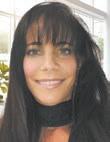
Modern Wellness offers comprehensive biofeedback scans to test for imbalances within the body. The scan immediately identifies the root cause of any symptom or health condition along with specific remedies and customized action plans. A holistic approach to health is discovering and eliminating the root cause of any issue to truly heal.
IMAGINE WELLNESS CHIROPRACTIC
Dr. Roxane Zamora, DC 822 E Union Hills Dr, Ste 22, Phoenix 623-582-8951
ImagineWellnessChiropractic.com/us

At Imagine Wellness Chiropractic Center, our mission is to provide chiropractic care to increase health, wellness and healing for you and your family. We are focused on corrective chiropractic care and offer nutritional consultations to bring your health to a whole new level! See testimonials on our website. See ad, page 27.
MY DENTIST
Dr. Michael Margolis and Dr. Stephen Kovar 2045 S Vineyard Rd, Ste 153, Mesa 480-833-2232 • MyDentistAZ.com

A holistic and biological approach to your dental needs and overall health. Bio-compatible dentistry, esthetic dentistr y lumineers/veneers, family dentistry and much more. See ad, page 3.
NATURAL DENTAL PARTNERS
6930 E Chauncey Ln, Ste 100, Phoenix 602-775-5120 • MyNaturalDentist.com




The doctors at Natural Dental Partners take the time to listen to your concerns and use their extensive experience to help you achieve better health. Using the latest technology (such as low-dose 3D imaging, CEREC, lasers, PRF, ozone and treatment of sleep disorders), they believe in a team approach to help you achieve your healthcare goals. Check out MyNaturalDentist.com or ABreathOfHealth. com to see how they can help you. See ad, pages 5 and 15.
BUTTERFLY HOLISTIC CENTER
Melanie Icard, NMD
1430 E Missouri Ave, Ste B127, Phoenix 602-353-7712 • ButterflyHolistic.com

Dr. Icard specializes in biological medicine, peptides, PRP, aesthetics and ozone therapy. Her offerings include holistic anti-aging medicine, pain reversal, natural and traditional aesthetics, ozone therapy, holistic ketamine therapy, and sexual health regeneration. See ad, page 16.
KIM CARTER, MA, HTCP
15215 S 48th St, Ste 154, Phoenix
Kim@IntuitiveKim.com
IntuitiveKim.com

Kim is an Intuitive and Healing Touch Certified Practitioner offering guidance when you feel out of alignment with your authentic self. Stress, fear, anxiety and grief/loss throw us off balance, making it challenging to access inner wisdom. Sessions include reading and clearing your energy field; and simple, practical selfhealing tools to keep you balanced and grounded. See ad, page 13.
WELLNESS CENTER
931 E Southern Ave, Ste 106, Mesa 480-306-7321
RealignYourLifeAZ.com
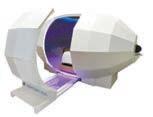
Realign Your Life Wellness Center features the Harmonic Egg—sound and light therapy for physical, emotional and spiritual energy healing. Other services include The Body Code, Quantum Touch, sound baths and Higher Guidance Life Coaching. See ad, page 13.
OSTEOSTRONG
8120 N Hayden Rd, Scottsdale Text/call 602-932-2792
OsteoStrongScottsdale.com

OsteoStrong is a leader in natural bone health and wellness with centers in Phoenix (Arcadia) and Scottsdale (McCormick Ranch). Our member s report significant improvements in osteoporosis, physical strength, balance and posture in 15 minutes a week. Specializing in osteogenesis without drugs, we’re dedicated to holistically enhancing quality of life. See ad, page 23.
IMAGINE HYPNOTHERAPY
Carmen Moretti, CMS-CHt, FIBH 8900 E Pinnacle Peak, Ste 200, Scottsdale 602-380-3631

Over the past 13 years, Carmen Moretti has helped people access that power within themselves to break free and heal from patterns of sadness, stress and overwhelm and live a life that they are proud of and that they love. See ad, page 25.
NUTRITION REVIVED
Ute Haahr, Integrative Nutrition Coach 480-206-0752
Ute@NutritionRevived.com
NutritionRevived.com

I help women with metabolic health issues balance their hormones, lose weight and reclaim their inner power. I specialize in helping women with involuntary childlessness through my integrative nutrition and mindset program. See ad, page 11.
NORTHWEST EXTERMINATING Organic Program Experts
623-516-2220
NWExterminating.com

We have organic alternatives available w ith multiple programs to meet your needs. Ask us about our year-round pest protection, SMART ecofriendly rodent control 24/7 home protection, and desert guard home sealing service. See ad, page 31.
ANDREA BRIGGS, AKA “CRITTER DOC”
ASAM, Sh Reiki, HTAP Communicator, Healer, Counselor 602-317-1543
1CritterDoc@gmail.com SpiritAnimalWisdom.com

With a gentle healing touch, Andrea provides wellness counseling, energy healing, animal communication, and intuitive counsel for pets and their people.
KAYA HOLISTIC
6102 N 16th St, Phoenix 480-737-0867
KayaHolistic.com

Kaya Holistic is a lifestyle boutique that carries a curated selection of handcrafted, sustainable goods and botanical wellness products. From cultivators and formulators to makers and artisans, we are committed to supporting companies and industries that make a significant impact in our world through sustainable practices and conscious choices. See ad, page 25.
FENG SHUI REAL ESTATE
Jennie Richau
Associate Broker and Certified Feng Shui Consultant, Brokers Hub Realty 602-292-0622 • WooWooAgent.com

A unique and holistic way to buy or sell! Utilizing Feng Shui and various "woo woo" methods to find you a home where you will thrive or sell your home quickly, for the highest value. See ad, page 10.
HOLISTIC ENERGY ACADEMY
13291 W McDowell Rd, Ste E-1, Goodyear 623-935-0501
TJHofgard@gmail.com
LavendarMoonStore.com
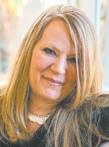
Make a Difference Doing What You Love! Become a Professional Holistic Health Energy Practitioner. Learn the most effective and comprehensive energy modality and techniques with proven results. Become trained in the body’s many energy systems; learn how to energy test, clear, restore, detect and correct energy imbalances. Levels I, II and III.

1538 E Southern Ave, Tempe 480-994-9244
Info@swiha.edu • swiha.edu

Nationally accredited college offers holistic health and wellness degrees, diplomas, certificates of excellence, continuing education and personal development, oncampus and online. Financial aid available. See ad, outside back cover.
11108 N Frank Lloyd Wright Blvd, Ste E16 Scottsdale
732-832-1036
DimensionsOfHeavenAndEarth.com

Dimensions of Heaven and Earth is Scottsdale’s exciting, new one-stop Spiritual Experience: a center of healing and insight combined with a store full of unique gifts from local artisans. With training and tools for your personal development, we are excited to help you take your spiritual journey to new levels! See ad, page 33.
The Path of Spiritual Freedom
1-877-300-4949 • EckankarArizona.org Eckankar.org • HearHU.org Facebook.com/EckankarArizona

Eckankar is an active, individual, creative spiritual practice. A companion and roadmap for your journey home—to the heights of Self-Discovery and GodDiscovery, and beyond. Come along and discover the most secret part of yourself. The key to spiritual freedom lies within you. Explore life as a Soul Adventure. See ad, page 13.
4105 N 20th St, Ste 115, Phoenix 480-442-5020
SummitLighthousePhoenix@gmail.com
SummitLighthousePhoenix.org

Dedicated to sharing Saint Germain’s Violet Flame. All faiths welcome. Learn how you can become a modern day mystic. We are dedicated to sharing the Teachings of the Ascended Masters® to help you bring in joy and peace to the world. Learn what the requirements are to make your ascension. See ad, page 11.
Mark Your Calendar
Sound Bath Healing in West Phoenix
Sound Bath Healings – Rejuvenate the Mind – Allow the Spirit and Body to Heal. Also available for Psychic and Tarot readings.
May 29 & June 5, 12, 19 • 3-4pm
$50 Per Person
Call and Pay in Advance
602-460-8114
35th Ave & Thunderbird Area
Mark Your Calendar
Judith Orloff: The Genius of Empathy
Join bestselling author, psychiatrist and empath expert Dr. Judith Orloff as she shares her latest book, The Genius of Empathy: Practical Skills to Heal Your Sensitive Self, Your Relationships, and the World. Q&A and signing to follow.
May 30 • 7pm
Free
480-730-0205
ChangingHands.com/event/ may2024/judith-orloff
6428 S McClintock Dr, Tempe

Color your way to relaxation!

NOTE: Please check market websites and ArizonaCommunityFarmersMarkets.com for more information on days and hours, and any restrictions.
Ahwatukee Farmers Market
4700 E Warner Rd, Phoenix
Sundays Oct-May 9am-1pm
Jun-Sep 8am-11am
Facebook.com/AhwatukeeFarmersMarket
Care 1st Farmers Market
328 W Western Ave, Avondale
Tuesdays Jul-Oct 8am-noon
ArizonaCommunityFarmersMarkets.com
Carefree Farmers Market
1 Sundial Circle
Fridays Oct-May 9am-1pm
Jun-Sep 8am-11am
Facebook.com/CarefreeFarmersMarket
Downtown Chandler Farmers Market
3 S Arizona Ave
Saturdays Oct-May 9am-1pm
Jun-Sep 7am-10:30am
Facebook.com/ChandlerFarmersMarket
Downtown Mesa Farmers Market
1 E Main St
Saturdays 8am-noon
dtMesaFarmersMarket.com
Downtown Phoenix Farmers Market
721 N Central Ave
Saturdays Oct-Apr 8am-1pm
May-Sep 7am-11am
DowntownPhoenixFarmersMarket.org
Gilbert Farmers Market
222 N Ash St
Saturdays Oct-Mar/Apr 8am-noon
Apr/May-Sep 7-11am
GilbertMarket.com
High Street Farmers Market
5415 E High St, Phoenix Sundays Oct-May 10am-1pm
Facebook.com/Farmers-Market-on-HighStreet-2244771575799425
Mommas Organic Market
Arrowhead Farmers Market
7780 W Arrowhead Towne Center, Glendale Saturdays Oct-May 9am-1pm | Jun-Sep 8-11am
Facebook.com/Getlocalazfarmersmarkets GetLocalArizonaEvents.com
Mommas Organic Market
Glendale Farmers Market at Cabela’s
9380 W Glendale Ave, Glendale, AZ 85305 Sundays Sep-May 10am-2pm | closed for summer
Facebook.com/Getlocalazfarmersmarkets
GetLocalArizonaEvents.com
Old Town Scottsdale Farmers Market
3806 N Brown Ave Saturdays 8am-1pm
ArizonaCommunityFarmersMarkets.com
Power Road Farmers Market
4011 S Power Rd, Mesa
Monday-Saturday 9am-5pm | Sunday 9am-4pm
PowerrdFarmersMarket.com
Roadrunner Park Farmers Market
3502 E Cactus Rd, Phoenix Saturdays Oct-May 8am-1pm | Jun-Sep 7-11am
Facebook.com/RoadrunnerParkFarmersMarket
Singh Meadows Farmers Market
1490 E Weber Dr
Fridays, Saturdays & Sundays 8am-2pm
Facebook.com/SinghFarms



Sun City Farmers Market
16820 N 99th Ave
Thursdays Oct-May 9am-1pm
Facebook.com/Sun-City-Farmers-Market631299790224049
The Capitol Farmers Market
1700 Adams St, Phoenix
Thursdays 10:30am-1:30pm
ArizonaCommunityFarmersMarkets.com
Uptown Farmers Market
5757 N Central Ave, Phoenix
Wednesdays Oct-Apr 9am-1pm & May-Jun 8am-noon
Saturdays Nov-Apr 9am-1pm & May-Oct 8am-noon
UptownMarketAZ.com
Verrado Community Farmers Market
N Market Pl & W Main St, Buckeye Sundays Oct-Jun 9am-1pm
Facebook.com/VerradoCommunityFarmersMarket
Farmers Market in Old Town Square
1042 N Main St, Cottonwood Wednesdays 4-8pm (check months/times throughout year)
Facebook.com/FarmersMarketatOldTownSquare
Flagstaff Community Farmers Market
211 W Aspen Ave, City Hall Parking Lot Sundays May-Oct 8am-noon
FlagstaffMarket.com
Prescott Farmers Market
Dignity Health, YRMC
900 Iron Springs Rd, Miller Valley Lot Saturdays 7:30am-noon
PrescottFarmersMarket.org
Sedona Community Farmers Market
Wells Fargo Bank Parking Lot
2201 W State Rte 89A, West Sedona Sundays May 14-Oct 15 8am-noon | Sundays Nov 5-Apr 28 11am-3pm
Sedona-Farmers-Market.com
Verde Valley Farmers Market
Hollamon St and Main St, Camp Verde Saturdays May-Oct 8-11am
Facebook.com/VerdeValleyFarmersMarket
Windmill Park Farmers Market 9950 E Cornville Rd, Cornville Thursdays 2-6pm (check months/times throughout year)
Facebook.com/WindmillParkFarmersMarket





